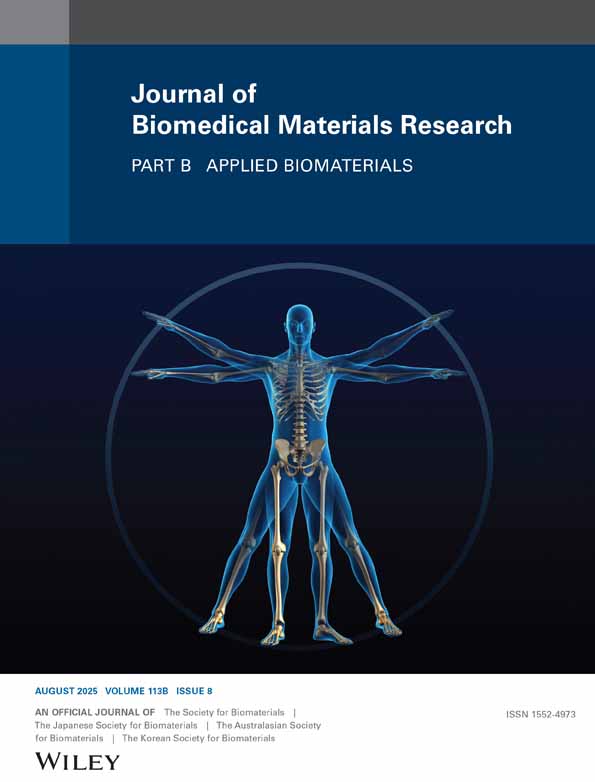Development of monetite–nanosilica bone cement: A preliminary study
Abstract
In this paper, we reported the results of our efforts in developing DCPA/nanosilica composite orthopedic cement. It is motivated by the significances of DCPA and silicon in bone physiological activities. More specifically, this paper examined the effects of various experimental parameters on the properties of such composite cements. In this work, DCPA cement powders were synthesized using a microwave synthesis technique. Mixing colloidal nanosilica directly with synthesized DCPA cement powders can significantly reduce the washout resistance of DCPA cement. In contrast, a DCPA–nanosilica cement powder prepared by reacting Ca(OH)2, H3PO4 and nanosilica together showed good washout resistance. The incorporation of nanosilica in DCPA can improve compressive strength, accelerate cement solidification, and intensify surface bioactivity. In addition, it was observed that by controlling the content of NaHCO3 during cement preparation, the resulting composite cement properties could be modified. Allowing for the development of different setting times, mechanical performance and crystal features. It is suggested that DCPA–nanosilica composite cement can be a potential candidate for bone healing applications. © 2014 Wiley Periodicals, Inc. J Biomed Mater Res Part B, 102B: 1620–1626, 2014.




